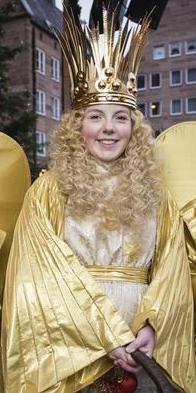I was in Germany last week and, among other cities, I spent some time in Nuremberg (Nürnberg), the second largest city in the state of Bavaria. For US Americans, the likely association of the city is with Nazi Germany, as it was there where the war crimes against top Nazis were held after World War 2. It was, in fact, a favorite city of Hitler’s, where the huge Nazi party rallies were held every year and where the infamous Nuremberg Race Laws against Jews were announced in 1935.
For many Germans, the association is likely to be different, namely, connecting the city to traditional arts and especially to Albrecht Dürer, a native son and one of the greatest artists during the transition from medieval art to the modern era. The city had one of the best-preserved medieval town centers, until leveled during the war. Another – and possibly the strongest association – many Germans have with the city is its Christmas Market (Christkindlesmarkt). Many cities, large and small, throughout Germany have such markets, which provide street food (most prominently sausages) and drink (Glühwein = mulled wine), as well as traditional artisan products, gifts, and local specialties.

Nuremberg’s market stands out due to the number and quality of artisan products and its reputation as the center of production of Lebkuchen, a traditional gingerbread-style cookie. It also has a long tradition which includes a competition each year for a young girl to play the role of the official representative (Christkind) of the market. Her role is to open the market in a formal speech (and fancy costume) the opening day and to serve for 2 years as a goodwill and publicity ambassador for the market and the city

This year there was some controversy in the choice of the Christkind, Benigna Munsi, the local daughter of a father from India and a mother from Germany. After her selection was announced, a member of the far-right AFD Party (“Alternative for Germany”) posted on Facebook, along with a picture of the 17-year old girl, the comment, Nürnberg hat ein neues Christkind. Eines Tages wird es uns wie den Indianern gehen.” (“Nuremberg has a new Christkind. One day we will suffer the same

Benigna Munsi as the Nuremberg “Christkind”
fate as the American Indians”). The comment evokes the anti-immigrant and nationalistic “replacement theory“, the idea that whites are being systematically (and with support from Western governments) winnowed out of majority status due to mass immigration and low birth rates among whites. The comment was roundly denounced in Germany, but its racist tone is reflected in commonly heard remarks from far-right politicians in many European countries today. The white genocide conspiracy theory of the “Great Replacement” (title of a book by French writer Renaud Camus in 2011) was also on display in the US in the Charlottesville alt-right march in 2017.
The irony of making this racist statement in – of all places in Germany – in Nuremberg was surely lost on the Bavarian AFD Party. But the rest of us should make the connection between such dangerous racist remarks and Nazi ideology, which lead to real, not imagined, genocide.